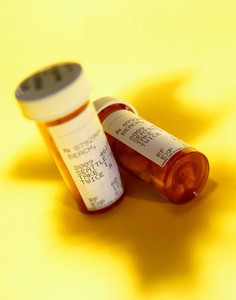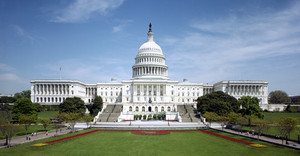In a BIOtech Now podcast of 13 November 2009, Mr Hans Sauer, Associate General Counsel for intellectual property of the US Biotechnology Industry Organization (BIO), speaks with Professor Chris Holman, an Associate Professor at the University of Missouri-Kansas City School of Law at Kansas City, Missouri, USA, about the role of patents in a pathway for the approval of biosimilars.
Professor Holman, “Patents have always played an important role in protecting the innovation of biologics, but they played a more important role in the protection of conventional pharmaceutical drugs. Even some of the most harsh opponents and critics of the patent system will acknowledge that for pharmaceuticals patents play a critical role.
A primary reason for this importance of patents is the abbreviated approval pathway for generic versions of drugs, by reducing any kind of regulatory barrier to entry bio-competition. As a result, patents become extremely important and crucial for providing the necessary period of exclusivity for an innovator to recoup their investment and as an incentive to innovate. So if this follow-on biologics legislation is enacted and becomes effective, it is going to lower the regulatory burden on competitors who are going to bring follow-on biologics to market. And to the extent in which it is effective in doing that, it is going to render patents more important in providing the necessary period of exclusivity to incentivise innovation.
One other factor that should be considered is the period of data exclusivity. Currently there’s a 12-year period of data exclusivity provided for innovators in the legislation that has passed by the House. To the extent this period is longer, it will reduce the importance of patents. But there have been proposals for much shorter periods of data exclusivity for biologic innovators. And to the extent we are to adopt one of these shortened data exclusivity periods, then patents will play a much more important and extremely critical role”.
Mr Sauer, “How is data exclusivity different from patent exclusivity?”
Professor Holman, “Data exclusivity is the period of time during which an applicant for approval of a follow-on biologic will not be able to rely on data that was generated and submitted by the innovators to obtain approval for the original innovator product. If someone wants to enter the market with a competing form of a biologic drug, they are able to do that today if they are willing to generate their own data to achieve the regulatory approval. What the follow-on biologic legislation would provide is an abbreviated pathway, or basically the follow-on producer would be able to rely on – and benefit from – data generated at the expense of the innovator to get approval for the follow-on product. And so the 12 years – or whatever the period of data exclusivity – would be the period of time in which the innovator would be protected from a follow-on competitor using the innovator’s data. Someone could always achieve their approval without relying on the innovator’s data, but this data exclusivity period always protects the data. It does not block inferior competition in either way”.
Mr Sauer, “How are the provisions for patent litigation in the proposed follow-on biologics bills different from the way these things are today handled in the small-molecule space?”
Professor Holman, “One difference is that for small molecules the innovator is required to list any patent that covers the product itself, formulations of the product or methods of using the product. These patents will be subject to a generic patent challenge. Under the proposed follow-on biologics legislation there is no cover ball Orange Book listing. And that makes sense I think, because for biologics, historically at least, patents covering the processes and reagents used in the production of a biologic – including DNA sequences, cells, methods of creating and exposing these cells – have been critical. These types of patents used in the production process are not even listed in the Orange Book. They are more secondary for conventional drugs. But because of this wide variety of processing reagent patents that are used in biologics, because of the complexity in the process, and furthermore because of the fact that a ‘biosimilar’ is not identical to the innovator product (for conventional drugs a generic copy has to be an identical copy: the same active ingredient, but that doesn’t apply to biologics), there is a wider potential universe of patents that could be relevant for the biologic. So for that reason there is no listing. Instead, the way in which – for example the House Bill – will work, is once an application has been filed for a follow-on biologic, that would put the innovator a notice. The innovator would then identify the patents that are relevant and that should be infringed by the follow-on biologic product. So you have that difference. Another difference is that for conventional drugs the innovator is allowed to file a law suit prior to approval of the generic drug, simply based on the filing of a generic drug application that challenges one of these listed patents. By doing so, there is an automatic 30-months stay provided to the innovator, which blocks FDA from approving the generic drug for 30 months, generally. That provision is not included in the proposed follow-on biologic legislation, so the innovator would not have that. In order for the innovator to block the follow-on product from the market, they would have to go into court and convince the judge to keep the product off the market. And the judge will generally only do that if the patent owner — so the innovator — has demonstrated a likelihood in succeeding. So only in a strong patent case will the innovator be able to block approval of a follow-on version”.
Mr Sauer, “Do you think there would be – under the pathways as you have seen them in the bills – a lot of patent litigations around biologics? One thing that I’ve wondered about is that if it’s going to be the case that there will be a 12-year regulatory data exclusivity, doesn’t that make a lot of patents off the table? Because the only patents that would need to be litigated in this follow-on preapproval patent litigation pathway, are those patents that have a life longer than 12 years after approval of the innovator product. Many patents will have expired. So how relevant is this really? Do you think there is going to be a lot of litigation?”
Professor Holman, “I think one of the benefits of an extended 12-year data exclusivity period, which is substantially longer than what is currently provided for conventional drugs, is that it would avoid at least some of the patent litigation. Because, as you say, since there is generally a 20-year patent term, and the corporation having a biologic will presumably be filed many years before the actual approval of the product, one would predict that by the time the 12 years have elapsed, some (or maybe all) of the core patents on the biologic product will have expired, thus really eliminating the need for litigation and is one of the problems with the current system. But that doesn’t mean the patents are irrelevant, because there could be other types of innovation. The 12-year period of data exclusivity cannot be extended, even if the innovator develops new formulations, new methods of delivery, new uses of the product or new strengths, etc. Even modifications of the structure of the biologic will not result in an extension of the 12 years, unless those modifications would result in some change in the safety or purity in the product. And what that means, is that the incentive for making these types of innovations will only come from patents. There will be no extension of the data exclusivity, as a sort of regulatory barrier to competition. But patent will still be available to claim these sorts of improvements of the product. I think those patents will still be very relevant after the 12 years have expired. And of course for any product that’s going to be as clinically and economically relevant there will likely be some patent challenges”.
Mr Sauer, “The data exclusivity period for small-molecule drugs that you mentioned earlier is substantially shorter than the ones that are currently contemplated in the follow-on biologic legislation proposals. Small-molecule drugs currently get between three and five years of this regulatory data exclusivity, which means they primarily have to rely on their patents to achieve market exclusivity. Can you flash out [explain] for us how that would work under the follow-on biologic bills? So, first of all: 12 years of data exclusivity, is that the same as marketing exclusivity? And second[ly], to the extent that innovators have to rely on patents, it has often been said – for example in the small molecules-space – that innovators might make small and meaningless changes to the molecule, to the drug formulation or to the dosage form, and thereby vastly expand and extend their monopoly in the market. Could you discuss these two aspects: is data exclusivity the same as market exclusivity, and these small and so-called meaningless changes that have been criticised in the small-molecule space, do you think that will happen in the biologic space?”
Professor Holman, “Data exclusivity, which is limited to the ability of the follow-on applicant to rely on data generated by the innovator, is not the same as market exclusivity. Somebody could create a competing product that would compete with the innovator and if they are able to generate their own data, they can use the conventional approval process and obtain market approval, regardless of whatever the data exclusivity period is”.
Mr Sauer, “So how long is the market exclusivity then in the small-molecule space today?”
Professor Holman, “In the small-molecule space, even if the period of data exclusivity is relatively short, the actual effective period of data exclusivity has been shown to be in the neighbourhood of 11-13 years. And that is primarily due to patents. So even though small molecules have a short data exclusivity period, they actually achieve something like the 12 years of data exclusivity that has been proposed for biologics. So I think of the 12-years data exclusivity period for biologics as a sort of back step. If it turns out that biologics are amenable to the same sort of effective patent protection that small molecules have generated, then we would expect them to achieve something like 11-13 years (around 12) of exclusivity due to patents. If that is the case, the 12 years of data exclusivity provides no extension, because the patent terminates at the data exclusivity term. So if that is the case, it would have the same market exclusivity period roughly as conventional drugs. But where the 12 years of data exclusivity could really be important, is that if – at least in some cases – it’s possible that patents will not be as effective for biologics as they have been for small molecules. And there is a variety of reasons based on history and looking how biologics legislation and biologics patent litigation has played out in the past. By looking at changes in the law and changes in the nature of biologics, there are many reasons to suspect that perhaps patent protection will not be as effective for biologics as it has been for small molecules, at least for some biologics. And if that is the case, then the 12 years will be critical in providing the necessary incentives for innovation. It’s easy to imagine a biologic drug that is highly useful clinically and very expensive and risky to develop, but for some reason not necessarily amenable to effective patent protection. We’ve seen in recent years a kind of heightening of the bar in terms of the obvious requirements. We’re seeing that it could be more difficult to get patents – claiming for example the genetic sequences encoding the biologic or the biologic cells – than it has been in the past. There’s a written description requirement that is currently being considered by the Federal Circuit Court and this is in fact limiting the patent ability, at least in some cases, of biological inventions. So there’s reason to think that there could be products that are highly valuable in a clinical sense that might not be developed if innovators are forced to rely solely on patent protection. So I think this 12-years exclusivity period is important for providing enough incentives for those kinds of drugs and, in cases where patents are effective, there really is no extension, because the two terms will expire at about the same time”.
Mr Sauer, “So what do you think then is the role of additional patents that still might be important for improving the product with small and minor – or insignificant – changes. Are we – or are we not – incentivising or disincentivising the work on further improvement of a product (such as new dosage forms and new indications) that once has been approved on the market, because a lot of work in biologics is done after the product has initially been brought to market?”
Professor Holman, “I think the 12 years period is providing that very important guarantee incentive for the initial development of the biologics, but since it’s not extendable, patents are going to be providing the predominant form of protection for these critical improvements that you’ve been alluding to. And as you’re noting, the requirements of patentability seem to be getting so much stricter. Clearly it needs to be a substantial innovation to get effective patent protection. These types of substantial improvements are going to be the only ones where the innovator is really going to have an extended period of exclusivity. Perhaps it’s important to note that under these proposals there is no automatic stay of marketing approval simply based on the filing of a lawsuit by the innovator. That’s the case for small molecules, but not under these bills. That means that if a patent owner (the innovator) has weak patents for this kind of trivial types of innovations that are probably obvious or unpatentable for some other reason, they might be able to file a law suit, but they shouldn’t be able to get a preliminary injunction blocking the entry of the follow-on product and they shouldn’t be able to keep the follow-on product off the market. And so I think the provisions need to be well-tailored to provide the important incentives for the initial innovation, even if patent protection is not available, but also to keep an important role for patents in incentivising this sort of further innovations to create better products than the versions of the original product”.
Mr Sauer, “When we talk about incentives and litigation of incentives, in the small-molecule space under Hatch-Waxman, the generic drug applicant is rewarded for challenging patents, I understand. Do you see any such provision in the follow-on biologics bills? And how generally do you see the litigation incentives: would people want to end litigations very much compared to these pathways under Hatch-Waxman?”
Professor Holman, “I think you’re right the Hatch-Waxman Act has the 180-day exclusivity period for the first generic to challenge a patent. But what you also find in the generic drug context is that many generic companies tend to pile in and challenge a patent, regardless of this 180-days period of exclusivity. So even in cases where there is no 180 days of exclusivity as an incentive, these patent challenges happen all the time. So I question whether it’s necessary. I think in cases where it’s justified, there will be patent challenges under the follow-on biologics legislation”.
Mr Sauer, “Do you think biologics innovators are worse off under these patent provisions of the follow-on biologics compared to small-drug innovators under the Hatch-Waxman provisions?”
Professor Holman, “It’s hard to predict how it’s going to play out for follow-on biologics based on past history with generic drugs”.
References:
Hans Sauer and Professor Chris Holman: The Role of Patents in a Pathway for the Approval of Biosimilars. BIOtech Now. 2009 November 18.
http://www.bio.org/podcasts/hans_podcast_final.wma
Source: BIOtech Now; Biotechnology Industry Organisation








 0
0











Post your comment